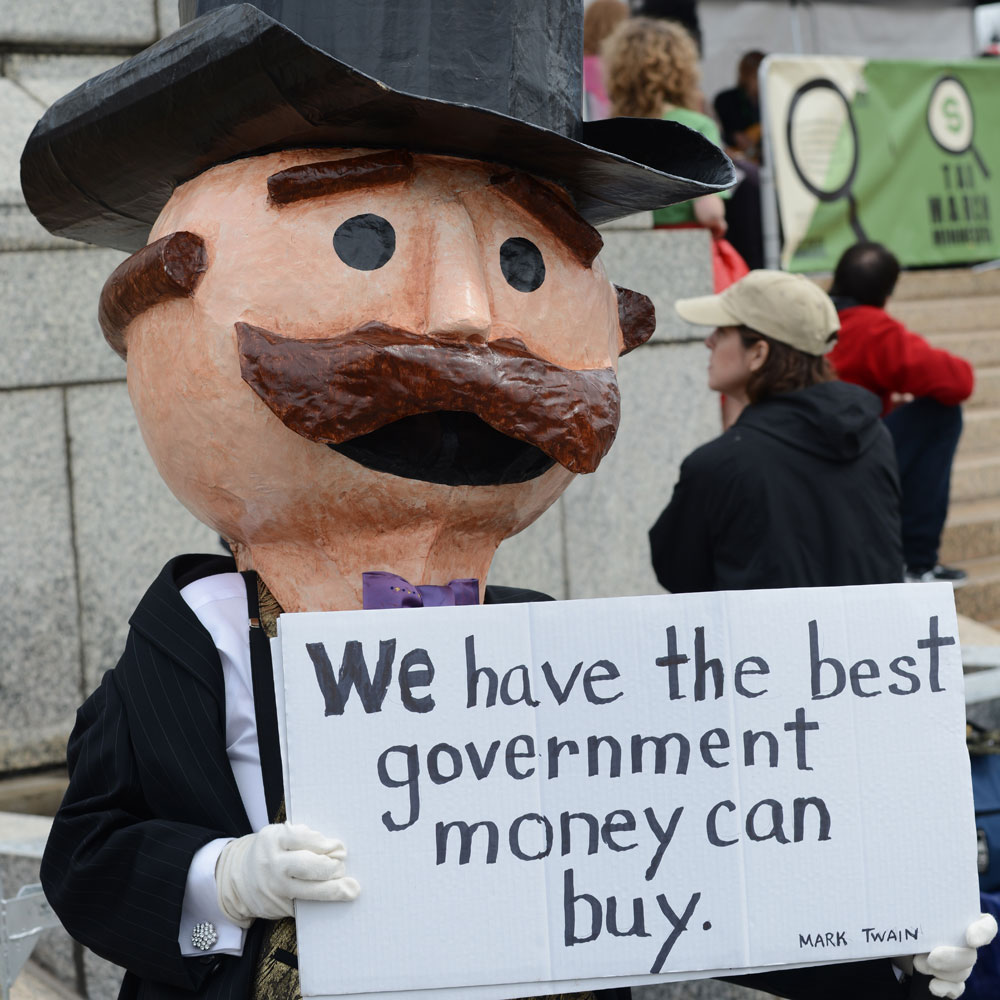
May 12, 2020; Washington Post, The Conversation, and the New York Times
On Tuesday, the Supreme Court of the United States heard three cases. Two involved President Trump’s financial records and subpoenas coming from the House of Representatives, and the third involved a subpoena from a New York City prosecutor for President Trump’s financial records. All three involve requests for records from times prior to Donald Trump becoming president. None of them engage the president as a plaintiff, but rather they focus on his banks and his accountants as keepers of these records. And yet these hearings were all about the president and separation of powers, presidential oversight by Congress, and quite simply, presidential powers.
On Monday, NPQ wrote about the new, public Supreme Court audio hearing process and how it might influence court decisions. These cases moved forward without technical glitches. In fact, the hearing process in these cases seemed to proceed more smoothly than some earlier ones, with the justices picking up on each other’s lines of questioning and even having time for a second round of questions in both cases. (The two congressional cases were combined.) Some of the justices even deferred to ask further questions in the second round. Perhaps they had all the information they needed; in each of these cases, the issues were not complicated, and lower courts had found for the Congress and for New York City. In addition, the lawyers for the House of Representatives and for the City of New York felt they had strong precedent to point to that would back up their cases.
What happened in the slightly-more-than-three-hours of hearings? The court began with the two House of Representatives cases. In response to a question from Chief Justice John Roberts, Trump’s lawyer, Patrick Strawbridge, stated that it would be “difficult to imagine” a situation where the House might be justified to subpoena the papers of a president. Roberts’ response was that while there was some power in the House to issue subpoenas, it sounds like the “courts are balancing competing interests on either side.”
Other conservative justices were concerned that the lack of limits on the House’s subpoena powers might be used to harass a president. House General Attorney Douglas N. Letter responded that there was “ample protection” and established limits on Congress’s powers were they to interfere with the president’s ability to do his job. Letter notes that these subpoenas were not even directed at the president, but at his banks and his accountants, and that they have been upheld by four lower courts.
“If it’s solely for harassment,” he said, “it wouldn’t meet the standard.”
In summarizing this part of the hearing, Strawbridge focused on constraining Congress’s power to investigate a president to that which is “clear, current, and limited to legislative purpose.”
“It is not a free-ranging warrant to investigate wrongdoing going back 10 years,” Strawbridge said.
Sign up for our free newsletters
Subscribe to NPQ's newsletters to have our top stories delivered directly to your inbox.
By signing up, you agree to our privacy policy and terms of use, and to receive messages from NPQ and our partners.
The court moved on to the second case involving the president and subpoenas. This one might have been the easier and, perhaps, less politically charged, if anything that involves the president can be deemed nonpartisan. The case might be summarized in terms of whether or not the president while in office is “above the law” and thus immune from investigation. Arguing on this point, President Trump’s private attorney Jay Sekulow asked the court to invalidate the New York grand jury subpoena.
Sekulow stated that supporting the New York request “weaponizes 2,300 local district attorneys” throughout the country to “harass, distract and interfere” with a sitting president. When questioned about the difference between this and the case of President Bill Clinton being deposed while in office in the case of Paula Jones by both Justices Roberts and Gorsuch, Sekulow indicated the difference was that the Clinton case was a civil lawsuit in federal court, not a state criminal investigation.
Solicitor General Noel Francisco also argued for the president, but from a different perspective than Sekulow. He felt that the New York subpoena had not met a high enough standard of need to target the president. According to Francisco, the local prosecutor “has to show he really needs the documents,” and that the “D.A. hasn’t tried to meet that standard.”
Carey R. Dunne, general counsel for New York County District Attorney Cyrus R. Vance Jr., argued that presidents have “responsibilities like every other citizen” and his investigation is not connected to Trump’s duties as president. Rather, he is looking into violations of state law in New York, where Trump’s business is located. If this case is held to a higher standard and delayed until Trump is out of office, it creates a burden for state and local prosecutors. If the statute of limitation expires for others involved in the case, or witnesses die or forget things during that time, it causes damage to the investigation.
“We’ve already lost nine months of time in this investigation due to this lawsuit,” Dunne said. “Every minute that goes by, without even a decision on the merits here, is granting the kind of temporary absolute immunity that the president is seeking here.”
A ruling from the court is expected by July, in the midst of the presidential campaign and either the continuation of, or recover from, the coronavirus pandemic—depending on your viewpoint. Both the banks and Trump’s accountant have said they will abide by the court’s decision. If the court rules for disclosure of information in either case, it will open up information that the president has gone to extraordinary means to protect. But they could rule that the president’s financial papers are not appropriate areas for this kind of inquiry. Precedent is on the side of Congress and New York, but this is not a court where precedent has always held sway.
And there is yet a third option, writes Adam Liptak of the New York Times. Some of the questioning justices raised the possibility that the court could return the cases to lower courts for reconsideration under stricter standards. That would have the incidental effect of deferring a final decision beyond the 2020 presidential election. A non-decision like that saves the court from having to weigh in where they would prefer to stay out. If that happens, it will most likely be declared a “win” for the president and a “loss” for governmental oversight…at least for now.—Carole Levine












